My Cedar Point Home
Pat Murphy's recollections of old Bay St. Louis take us across Highway 90 and to Dunbar Pier, the old Bay Waveland Yacht Club and down Felicity Street, where his childhood home once stood.
If my childhood memory serves me accurately, my dad talked of Mrs. Favre doing owner financing for the property. I think that Dad paid $800 for the property ($100 per 25 ft. on Felicity).
Felicity Street 200 Block
At this time there were no houses on the north side of Felicity except up close to Dunbar Avenue.
The Kiefer family lived at the corner and Mr. Harry Benjamin (who was married to Mr. George DiBenidetto’s sister, Mary) was the next and only other house on that side. On the south side where Dad’s property was located the first house was the Scianna home (Charlie Scianna was married to Mrs. Favre’s daughter, Beverly). Ms. Ida Cramer lived next door, and then Mr. and Mrs. Earl Raymond. There was a vacant wooded lot and then Mr. and Mrs. Shadoin’s residence with another vacant wooded vacant lot on the other side. Our property was next to several more vacant wooded properties. After these came Russell and Mary Chapman’s home, and then more woods until CC McDonald’s home. After McDonalds there was nothing but woods and swamp on that side of the street all the way to Joe’s Bayou (this was long before the Casino or Casino Drive was ever thought about). What is now the casino property on the north side of Felicity Street was owned a man named Joness and operated as a large farm. Burnell and Joe Necaise's father Forrest ran the farm for Mr. Joness, and their family lived on the property. The second block of Felicity Street was just a dusty dirt road with drainage ditches on both sides all the way back to Joe’s Bayou and then continuing on around becoming Joe’s Bayou Road. This road ended at Blue Meadow Road (Main Street). At the time everything past Earl Raymond’s house was not within the city limits. Garbage pickup was by private contractor (in a pickup truck with wire fence sides) and everyone was on septic tanks. There must have been water because I know that we didn’t have our own well (possibly Mrs. Favre had a big well and provided water to the properties but I don't remember). There was nothing on the north side of the street past Mr. Benjamin’s except scrub pines and swampy grassland, which seemed to catch fire pretty regularly. My dad and other men in the neighborhood were the unofficial firefighters in these situations. In the dry part of the year Felicity Street was really dusty. Occasionally our county supervisor would come and spray the street with oil to keep the dust down. If we were really lucky they might run a road grader down the road when the potholes got too bad. These things didn't happen very often. In the Pines, In the Pines
There were lots and lots of pine trees. Our front yard probably had 50 big pine trees in it (so many that after Hurricane Camille one couldn’t see the house from the street because of all the broken off big pines). The sides and the back of the property were filled with smaller pines.
One of the things that 8-year-old boys do is construct forts and hideouts. In our back yard my dad would let me and my buddies cut down all of the pine trees that we wanted. At this time I was hanging around with Richard Schaefer, whose father, Mr. Kaiser (Camille), worked for my Grandfather Stevenson as an electrician. Richard was several years older than me but loved the outdoors as much as I did. We’d spend days cutting those small pines down with an ax. We would cut the tops out, then cut the trunks up and make log cabins by crisscrossing the logs. Then we’d put more logs across the top for a flat roof. In six or eight months, when the newness wore off and we lost interest, the old man would just fill the log cabin up with yard trash and burn the whole thing. Daddy loved us building the log cabins out of those smaller pines. Any kind of little oak or magnolia tree was a really big deal, especially to my mother. We had a nice small live oak at the back of our driveway and for some insane reason (like George Washington with the cherry tree, I suppose), I cut the top out of this oak with a pocket knife. I think that I was punished for at least 10 years over that stunt. Playmates
My sister Mary Ellen’s playmates were the daughters of CC McDonald and Russell Chapman, Wendy and Mary Jane. My baby sister Carleen played with the Chapmans’ younger daughter Susie. Andre McDonald and sometimes Mrs. Favre’s grandson Donald were my neighborhood running buddies.
Sometime around 1960 we acquired a new neighbor on one side of us. Mrs. Alma Galle built a weekend getaway home. One funny memory concerning Mrs. Galle and her weekend party house comes to mind. Mrs. Galle used to throw parties that would rip and roar until two or three in the morning. They were loud and used to keep my dad awake at night. Daddy would wait until early in the morning after one of these parties. He would start cutting grass at five in the morning and concentrate on the property line right outside of Mrs. Galle's bedroom window. I don't remember exactly how it got resolved but the parties got quieter and my dad and Mrs. Galle were always good friends. One day a car drove up while Mrs. Galle's home was being built and lots of kids started piling out of the car. As I mentioned earlier, I didn't have but a couple of kids to play with in my neighborhood. Mrs. Galle's daughter Gloria was married to Lawrence Forstall, and they had seven kids. Mrs. Galle's other daughter Natalie was married to brother Warren Forstall (two sisters married two brothers) and they had a bunch of kids. There was also another sister who had a bunch of kids. These families were regulars at the weekend house with Lawrence Forstall eventually building a house on the other side of Mrs. Galle. The Forstall grandparents had for some time owned an old weekend home in the first block of Leonard Avenue next to the old Taylor School building. At any rate, my sisters and I never lacked for neighborhood playmates again! Gloria and Lawrence Forstall eventually became full time residents of Bay St. Louis. The younger kids went to school here, some now being full time residents and mainstays in the Bay St. Louis community. Yardwork
It seems that my daddy was always working in the yard spreading fill dirt whenever he could afford to buy it. We’re not talking spreading it with a tractor either. Nope, it was spread one shovel at a time. My old man was a hard worker. The property was very nice in the dry times of the year and really wet in the rainy season.
Daddy dug several swale ditches (by hand of course) from the back of the property to the street so that the water would drain to the ditch and out to the street. There was a ditch going down the side of each property line, one running down the side of the driveway and then one from just in front of the house across the middle of the front yard. My Dad eventually turned the one across the front yard into a French drain. I have to give it to my Dad because his drainage system worked pretty well most of the time. Over the years the neighborhood developed, more and more fill dirt was used in the neighborhood and our property got harder to drain during the rainy season. My dad just couldn't afford to keep up. After we actually developed a sort of lawn in the front and around the house, it was nonstop grass cutting with a push mower during the spring and summer. I don't mind telling you that I hated it. Even when we got a riding lawn mower, it was a lot to keep up with. Hoffman's Farm
I mentioned earlier that Hoffman’s Farm fronted Dunbar Avenue and extended back well past the rear of Daddy's property. At one time the whole thing was covered with a pecan orchards. There were a house and a barn on the property. Old Man Hoffman died in the late 1950s and the land gradually became overgrown with the buildings in desperate need of repair.
My buddies and I used to play back there and snoop around in the barn and the old house. One of my friends, Billy Shumski, actually found an old Civil War-era powder horn with CSA engraved on it. I also used to use this property as a shortcut to walk across when I would go back to Captain Clark's to ride horses. Captain J.W. Clark later owned the property that formerly belonged to A.G. “Red” Favre at the end of Commangere Boulevard. Captain Clark was a merchant marine ship's captain and lived back there with his wife and three pretty daughters. The family kept horses and Shetland ponies and I used to go back there and ride horses with his daughters. The estate had a big barn and pasture as well as riding trails through the woods at the rear of the property. Later my friends the Wagner brothers, Chuck, Lewis, and Jimmy, lived on the property with their mother, Ms. Bess. Dunbar Avenue
In the early 1880s, G.W. Dunbar’s Sons built a seafood-canning factory on North Bay and a whole community grew up around this factory.
Dunbar Avenue was the main entry for my family coming into Cedar Point. Dunbar started at Main Street and ended at the seawall on North Beach Boulevard. The intersection of Dunbar and Ulman Avenue was really where the journey for us began. At this intersection was the little league baseball field, Dave McDonald’s Building Supply, and Monitor Paneling Company (formerly Slim Gillmore's Chrysler dealership). Driving down Dunbar towards Cedar Point there was nothing but woods before the red light at the new Hwy 90. Moore's Texaco Station was on the left after you crossed the highway. Beyond the Texaco there wasn't much other than a couple of houses and thick woods on both sides of Dunbar all the way to Commagere. Esplanade and Highland Drive weren't even thought of at that point. Across Dunbar Avenue from Commagere Boulevard on the right was a big pecan orchard with a road that led back to the Hancock County Old Folks Home. I can still remember something that my dad said to me in conversation one day as we passed the clearing of this orchard for the "new" hospital (Now Dunbar Village Nursing Home). My dad told me "Just think, son. One day you'll be able to tell people that you remember when all of this was a pecan orchard." Yeah, Pop, I remember and I still tell people that. The Larroux Family
No talk of Cedar Point would be complete without mention of the Larroux family. There were four Larroux brothers: Jimmy, Ed, Larry and Warren. There was a half brother, Mark Solomon, who was a very nice guy as well as being extremely intelligent. There was one Larroux sister, Dorothy, but she died early in a flu epidemic around WWI. One of the Larroux brothers, Ed was married to Ms Virginia Baxter who worked at Hancock Bank. Mr. Ed Larroux owned and ran Larroux's Grocery on the corner of Dunbar and Thomas Street. The business previously was Rando's Grocery, and was purchased by Mr. Ed in May of 1952. This store played a prominent part in my Cedar Point childhood. Around 1956 another grocery store opened on the corner of Julia Street and Dunbar Avenue. The Mercadel Grocery was in a building on the closest corner of Dunbar and Julia. This business only operated for about two years because they could not compete with Mr. Ed's entrenchment in Cedar Point. After the closing of Mercadel Grocery, Ed Larroux converted that building into a stock warehouse in the rear and a place in the front for kids to play ping pong and pool. He installed swings and a merry-go-round on the lot next door. All this property later became Larroux Park. Actually the grocery was more like a general store, because Mr. Larroux sold everything from hardware, groceries, cigarettes, and beer to fishing tackle, soft drinks, and fresh cut meat. This was in the "dry" days of the black market tax, and liquor was sold out of the back room. The store was within easy bike-riding distance of my house and was about midway between my buddy Richard Schaffer's and my house. Richard and I used to buy nails, several pounds at a time, to construct our log cabins. Although Mr. Ed offered home delivery (usually by his nephew Jean), there were many days when my mother would send me by bicycle to buy cold cuts for lunch. Alma Sick was the checkout girl for the grocery. Brother Larry Larroux was a good friend of my grandfather Stevenson and was the go-to guy for air conditioning and refrigeration work especially in the 1950s. In 1955 he convinced his brother Ed to air condition the store with a big old time water cooled a/c unit. Many businesses at the time were not air-conditioned and this move made Mr. Ed's store very popular on hot summer days. Larry, whose birth name was Emile, lived with his family on North Beach Boulevard past the yacht club just before you came to Boardman Avenue. The other brother, Jimmy Larroux, was a master carpenter and could build anything from a boat to a home. Mr. Jimmy was in partnership with Sam Noto in the general contracting business. Mr. Larroux had a workshop behind his home and built furniture, cabinets and anything else back there.  Anyone who knew him would recognize Mr. Jimmy Larroux in this shot. Standing on a sandbar at Leopold Street scouting the fishing. (Courtesy Jeanie Larroux Prescott Archives) Anyone who knew him would recognize Mr. Jimmy Larroux in this shot. Standing on a sandbar at Leopold Street scouting the fishing. (Courtesy Jeanie Larroux Prescott Archives)
Even though I knew all of them quite well, I probably knew Mr. Jimmy Larroux better than any of the others. My grandfather Stevenson's contracting business did a lot of the electrical work on the homes that Mr. Jimmy built. The other brother Warren was career military and only lived here as a young man. All of the brothers were avid sportsmen but Mr. Jimmy Larroux was well known for his prowess chasing fish, especially in the Cedar Point waters. St. Joseph's Chapel
St. Joseph’s Chapel was constructed as a church for the Dunbar Brothers seafood factory workers. There were a couple of canneries on the Bay in Cedar Point. The first mass at St. Joseph’s was celebrated on March 19, 1896. The Larroux brothers' mother, Marguerite Larroux Solomon Backman, was the organist at St. Joseph’s and played every Sunday morning from 1908 until 1956. The church was renovated by Mr. Jimmy Larroux after the 1947 hurricane, doubling its size.
As a young child living in Cedar Point, I vividly remember going to Sunday mass at 8 a.m. during the winter and 7 a.m. in the spring and summer. There was no a/c and the big windows would be opened to the birds’ chirping and singing. The priest would hear confession 30 minutes before celebrating mass every Sunday. Another memory that I associate with attending church at St. Joseph’s is of Ms. Lillian Carver attending mass with her seeing-eye dog. Ms. Lillian was the blind lady who ran the concession stand at the courthouse and she would walk to work five days a week and to mass at St. Joseph’s every Sunday with her dog. Through the years this quaint little chapel weathered many storms including the 1947 hurricane, which left water marks of about four feet on the inside walls. Hurricane Camille left marks eight feet up on the interior walls. Unfortunately, after 2005's Hurricane Katrina, there were no interior walls left to leave marks on. This beautiful old chapel was totally destroyed. Bay Waveland Yacht Club
The Bay Waveland Yacht Club has played a prominent role in Cedar Point since 1948, when the original charter from 1898 expired and was then renewed. A new club was built on North Beach Boulevard at Second Street about 1950.
The new club was built on the site of the former Peerless Seafood/Bay St. Louis Oyster Company/Dorgan Canning Company which was one of a couple of seafood canning factories on the shores of the north part of the bay. When I was a child, my family belonged to the club because the membership fees were modest and included use of their swimming pier. My sisters and I spent many happy hours with our childhood friends swimming off this pier and playing on the beach at the yacht club. As a teenager, I attended most of the dances that were sponsored by the club. There were some great bands that played at BWYC over the years. Through the years BWYC sailors have regularly won regattas and national awards for their sailing skills. The club has produced and continues to produce generation after generation of expert championship sailors. It has been speculated that the Bay of St. Louis is an excellent training venue because of its winds and currents. Most of Bay Waveland's sailors have been born into this dynasty, learning their skills from parents and grandparents, all competitive champions themselves. North Beach Seawall & Dunbar Avenue Pier
Other than the architecture, not very much has changed as far as North Beach Boulevard and the seawall go through the years.
Hurricane Betsy in 1965 and Hurricane Camille in 1969 brought the era of raised homes, especially along North Beach Boulevard. Even after Camille there were still plenty of old landmark homes (like the Saenger Mansion) that had been on Beach Boulevard for 75 years or more, but every one of them was destroyed in Katrina's tidal surge. Now every home that has been rebuilt on the street seems to be 40 feet in the air (not actually, but they seem that way). The north end of the road and seawall remain virtually unchanged since construction in about 1923. One can look at photos of North Beach Boulevard at Dunbar Avenue from 60 years ago and other than the automobiles, the road and landscape look the same. The Dunbar Avenue pier is a little more high-tech than it used to be (thanks to abundant federal money after Katrina) but it is still a favorite fishing and crabbing spot for lots of people. One of my favorite memories is of going down towards the end of North Beach at night with my dad and some buddies. We would bring a bag of dry dog food and a cast net with us because in the fall of the year when the white shrimp come into the bay, you can scatter dry dog food out in the water and throw the cast net. We used to come home with fifteen pounds or more of beautiful huge shrimp
Another favorite attraction of the North Beach Boulevard area was the submarine races. Usually, this area was pretty deserted late at night with not much automobile traffic. On dark moonlit nights with thousands of stars in the sky, the time would be right for watching the submarine races. These races occurred regularly in Cedar Point and were a favorite of teenage boys and their girlfriends. I used to watch them on many occasions while parked on the side of the road. The only problem watching them from inside the car was that the windshield and car windows usually got pretty fogged up!
When I was a senior at St. Stanislaus, I wrote a composition as part of a creative writing course expounding upon the sport of submarine race watching. The principal, Brother Lee, actually called my dad on the phone to praise me for my vivid imagination. “Can you imagine, Mr. Murphy! Submarine races, what an imagination!” The drive down North Beach from Dunbar to the end remains one of my favorites. It is one of my favorite ways to chill out and unwind. There are plenty of places to pull over, park, and enjoy the solitude of the scenic back bay and mouth of the Jourdan River. This afternoon I decided to take a ride to Cedar Point and take some photos of the old Submarine Race Course. On the way back, I drove down Felicity and pulled into the driveway of what once was 224 Felicity. I have had a hard time with this each of the two or three times that I've done it since Hurricane Katrina. It hurts my heart. The only thing that I recognized was the big pine next to the driveway close to where the brick walkway used to be. Move on, Murphy, move on. It's hard. Comments are closed.
|
Categories
All
Archives
July 2024
|
Shoofly Magazine Partners
Our Shoofly Partners are local businesses and organizations who share our mission to enrich community life in Bay St. Louis, Waveland, Diamondhead and Pass Christian. These are limited in number to maximize visibility. Email us now to become a Shoofly Partner!







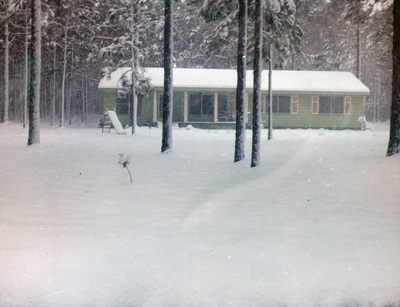


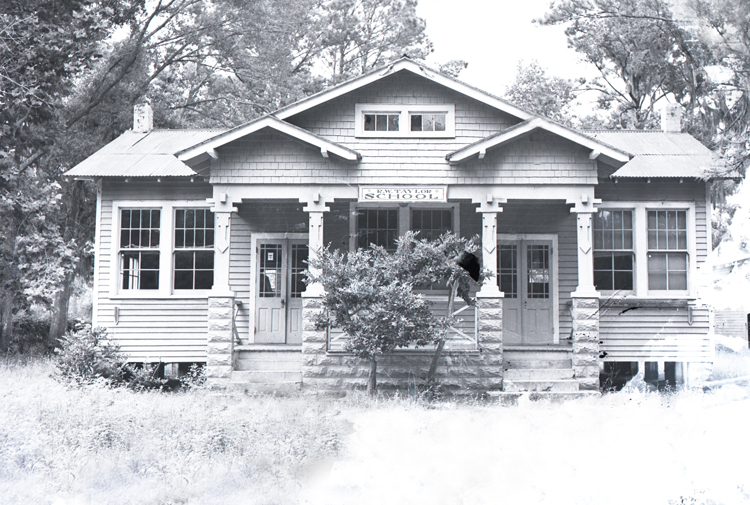












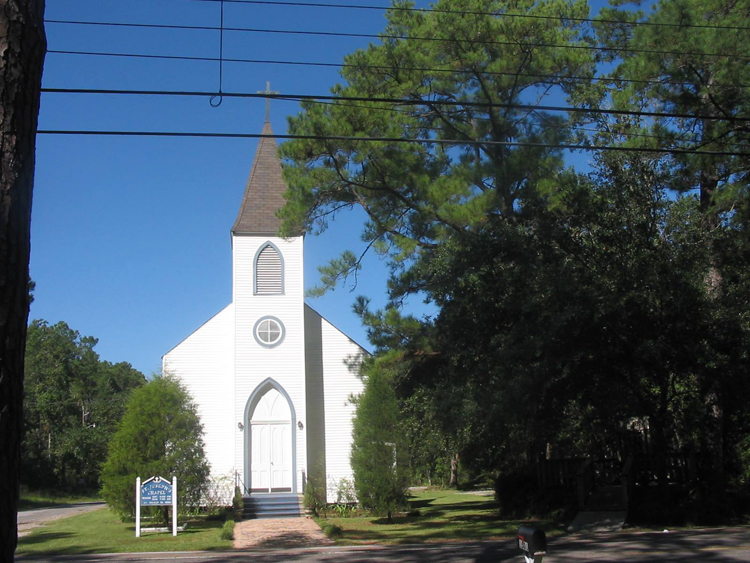


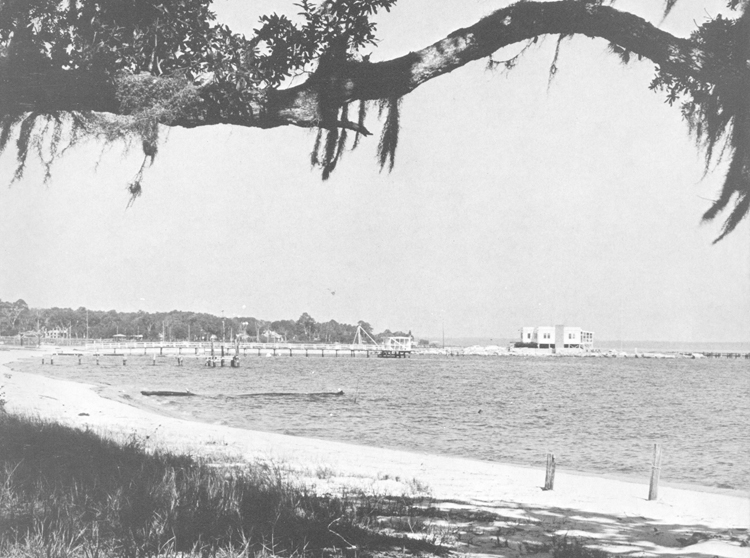

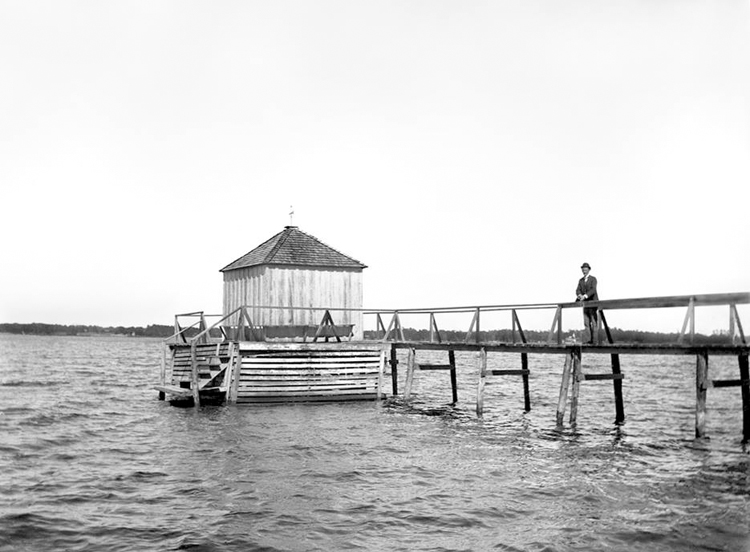









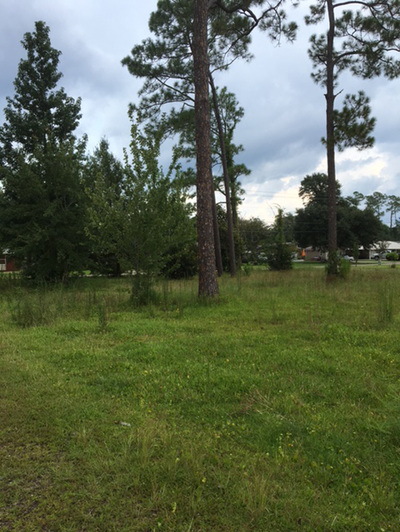


























 RSS Feed
RSS Feed























